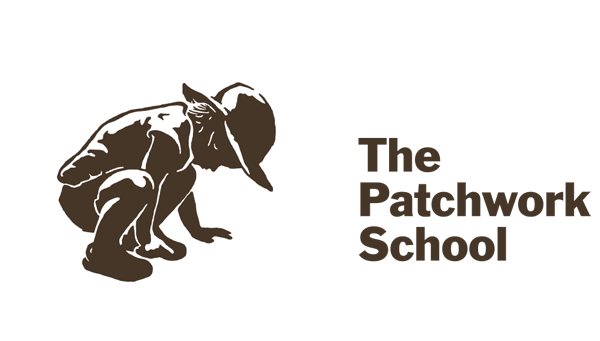The Dictionary Definitions of Emergent & Curriculum are:
Emergent: arising unexpectedly
Curriculum: the courses offered by an educational institution
This is actually quite an accurate description of how one aspect of “curriculum” works at The Patchwork School. The teacher led activities that children participate in arise somewhat unexpectedly in that “offerings” are not planned very far in advance of when they occur. Some offerings are concocted that very morning by small groups of children while some are scheduled a week or two out by a teacher, parent, community member or older child. Also, they truly are “offered” and children can choose whether or not they want to participate.
Context
However, one important aspect of our “curriculum,” is not really touched on by this definition — the environment. In Reggio Emilia, the environment is thought of as the third teacher, offering everyday choices like dress-up or the sandbox but also intentionally created “provocations” set out by teachers.
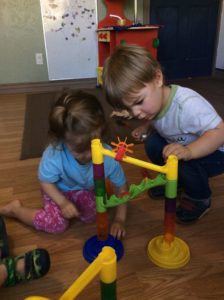
In addition, this definition misses the primary realm of study that children are often most focused on: the social. Children are truly working hard, almost studying human nature through their play and everyday experiences. Toddlers are working hard on separating from their parents for the first time, on experiencing the world from a very sensory level, on being able to eat and walk and talk independently. At the preschool age, children start to focus on what friendship is all about, who they are in respect to others, self-regulation, and they start to develop their own personal interests and favorites. Within the Kinder age group, children are experiencing much deeper social interactions and finding long-lasting friendships. They are becoming attuned to their strengths and weaknesses, and beginning to really pursue their own passions.
Thus, a huge focus of our “curriculum” is creating space and time for this natural social work to happen through play, through conversation, within meetings, and through the course of everyday experiences like lunchtime or walking to the park. In addition, every year we focus on the world around us, through our community and also through the seasons.
We view children as competent individuals who are interested in having a say in their own education. Children naturally want to learn, and it is often a matter of getting out of their way. By closely observing the child’s interests and areas of focus, we are able to help them to develop their ideas, expand upon their initial interpretations and deepen their understanding. By encouraging them to follow their interests, we are supporting the development of critical thinking skills, allowing for time in the learning process, and allowing them to come to reading, writing, math, science, art and more on their own terms. Within this naturally meaningful context, the knowledge attained in the content areas has staying power by association to the interest of the child.
Additionally, in a multi-age setting children will encounter opportunities to scaffold each other, and be scaffolded in the learning process. This type of peer support is powerful in a way that adult support cannot be; it allows children to teach each other, and therefore own their knowledge, skills and ability to communicate.
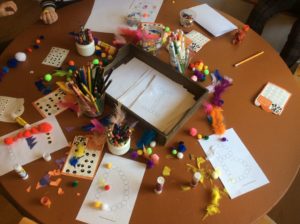
Environment & Materials
The school environment can provide provocations that promote critical thinking. This access allows for the most valuable type of learning — that which comes from actively engaging with one’s world. First-hand experience with both the natural and the man-made world will allow children to learn from their own mistakes and explorations.
By offering children a wide variety of materials, we allow them to construct their own learning. Materials that are open-ended and can be used in various ways are the most effective for promoting critical thinking and imaginative play. In addition, we can help encourage children to be confident and competent by organizing materials in a way that allows children to easily access them and understand how to put them away.
Documentation & Assessment
Documentation is another important component of the Reggio Emilia approach. Documentation can help teachers and children create records of their common experiences, creating a sense of community. In addition, photographs, video, and recorded conversations can be reviewed by teachers to help determine what the children already know and where they might try to go next. The documentation can also be reviewed by the children to help them reflect on their experiences, allowing them to think critically about what they learned. We believe that documenting children in this way authentically assesses their progress. Therefore we do not utilize any other standards or standardized testing for assessment.
Offerings
“Offerings” is a term we use to talk about activities that are presented to the children. These are not called “lessons” because the children are always given a choice of whether or not they would like to participate and they are subject-centered rather than teacher-directed. This is based on the belief that children will choose challenge when given the opportunity to do so. Each day teachers and children (and sometimes parents or other community members) will offer up ideas for the day — these include things such as art projects, research, games, books, or even a nature walk. Generally these offerings will be related to topics that the children have shown an interest in and have explored to some extent. The children are also given opportunities to suggest their own ideas for the day, which can result in future offerings, small projects, or even long-term investigations.
Offerings that have been given by teachers:
nature walk, self-portraits, magnet & iron filing investigation, online volcano research, weather charting, fire-fighter dress-up, fire & water dancing, guitar playing, etc.
Offerings that have been given by parents:
stained-glass valentines, banjo playing, drumming, pottery, guitar playing, ornament making, pipe-cleaner sculptures, venus fly-trap watching, etc.
Offerings that have been given by children:
shoe-box cities, magic dust, wood sculptures, dancing, painting, book sharing, book making, bug hunting, etc.
Offerings that have been given by community members:
planet lecture, flute playing, piano playing, clay sculpting, story-telling, etc.
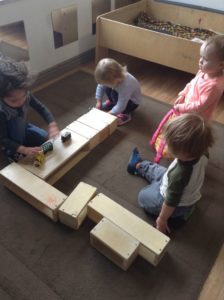
Image of the Child
Children should be respected as people, and valued for who they are, rather than for who they might become. Therefore, it is important to provide an education for the whole child by valuing their social, emotional, physical, linguistic, and logical-mathematical intelligences.
Because we believe that no child can be forced to learn, we think children should be offered an environment which encourages their natural inclination to learn. By respecting the child’s right to make choices regarding his or her education, we support the development of their self-awareness, as well as their self-regulation.
In an environment where children feel safe and confident, they are free to be their naturally competent selves.
Role of the Teacher
Just as we respect the children in the space, we view the teachers as human beings who bring their own different strengths, passions and ideas to the space. All of our staff members are included in regular consensus-based decision making meetings similar to those that the children participate in so that we practice what we teach. One of the big decisions teachers participate in is the hiring of the staff itself, requiring that we make really tough decisions, and work through conflicts that are for us equally challenging to those the children are asked to work through. Teachers are viewed not just as caring for the children, but equally as caretakers of the school environment, the philosophy, themselves, and most of all the community as a whole.
When working with children, the teachers’ first job is to be an observer and listener, first attending to the child’s social emotional well being. The teachers next job is then to perfect the art of balance. The teacher must learn to balance compassion with responsibility, to offer and model academic options while also respecting the learning that arises naturally from play, to model compassionate communication while also being quiet enough to amplify voices of smaller people, to keep children safe while also offering space for safe risk-taking.
This is no easy task and cannot be done alone, which is why we co-teach and encourage constant communication among the staff. The teachers work together in ways that model problem solving, critical thinking, compassionate communication, and a love of learning.
Rather than offering answers, the teacher most often offers questions, allowing the children space and time to solve their own problems. We trust that children will learn if we allow them both freedom and access to resources. Hence, we view the teacher as more of a shadow than a director, ready to step in and assist when necessary, to provide a possible expansion to an idea, to ask a challenging question, or just to document and record an experience for later reflection.
[My child] has grown so much, it’s truly incredible. This school has meant so much to us. Thank you guys for all of your support, compassion and thoughtfulness. Your teachers are amazing, it’s such a special school, we feel so lucky to have found it.
Melody (parent, 2019)
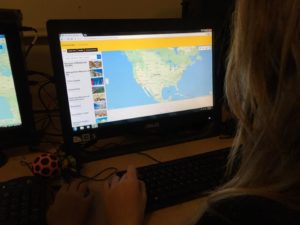
Technology
We believe that computers are immensely useful when used as tools, the way they were intended to be used, and the way that they are used by adults in everyday life. We believe that it is a disservice to children to ban technology altogether because it is a reality in this day and age, and computer skills are going to be just as important as literacy in the near future. At the same time, it is very important to help children learn the powers and dangers of technology. We like to compare using technology with children to helping them learn to cook: at first you help them understand the dangers of knives and stoves by keeping them away from them altogether, then eventually you let them help pour the pancake batter or cut with a butter knife, and finally you allow them to start cooking some simple things on their own. Just as we wouldn’t keep children out of the kitchen entirely, we shouldn’t deny them the opportunity to learn about computers in a safe and natural setting.
At school we believe that computers can be used for research, for communication, and for expression. We frequently use the school laptops to look up some tidbit of information we couldn’t find in a book, or to find a video of some type of insect or musical instrument that the children have never seen but are curious about. The computers are always used with a teacher, who can use the opportunity to talk about search engines, about finding trusted sources of information, about avoiding advertisements, about how careful one must be with the computer itself, or about other topics that may come up. These concepts, along with the idea that computers are helpful tools, are then explored and experienced in a meaningful and safe context.
As for communication, we use the computers to show the children pictures of events so that we can reflect on our experiences together, we show them short videos of themselves, and sometimes we might send an email together if it is relevant (such as a note inviting parents to an event). As an example, we once took a video of a group of children putting on a puppet show for the first time and then let them review the video so that they could see what improvements they wanted to make (one particular puppet kept slipping behind the stage, which they could then see once they became the audience).
Ultimately, these guided experiences with technology will allow children to become computer literate and will help them understand the many ways that computers can be useful tools.
